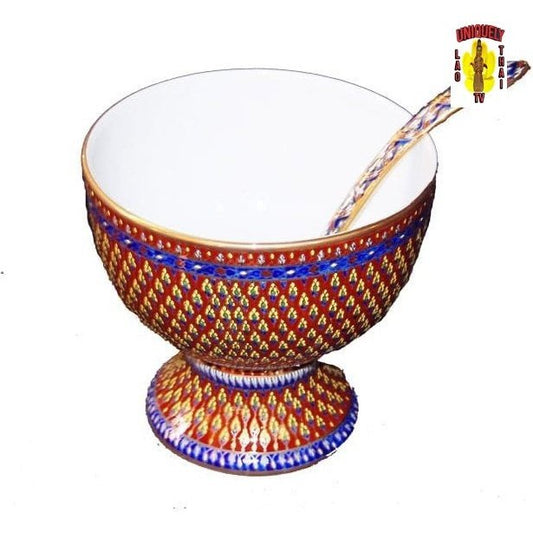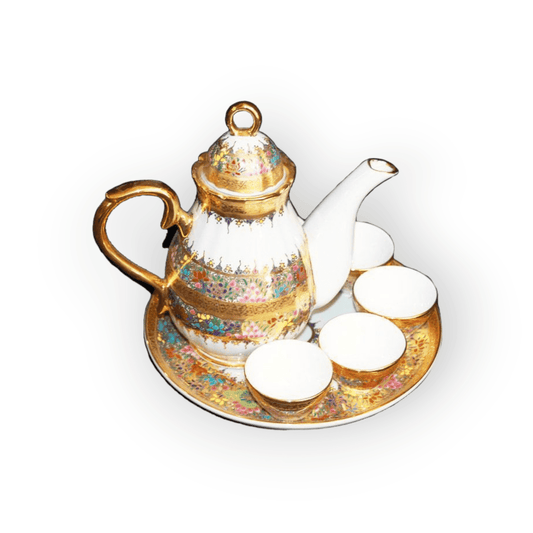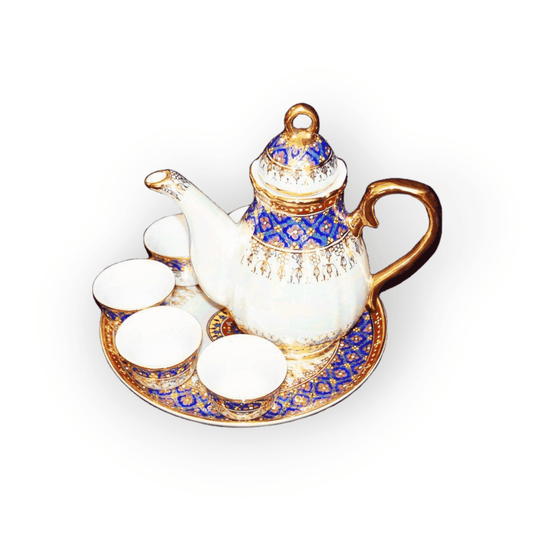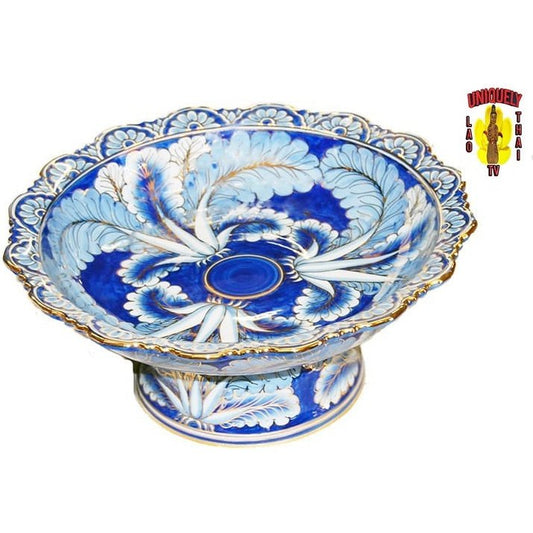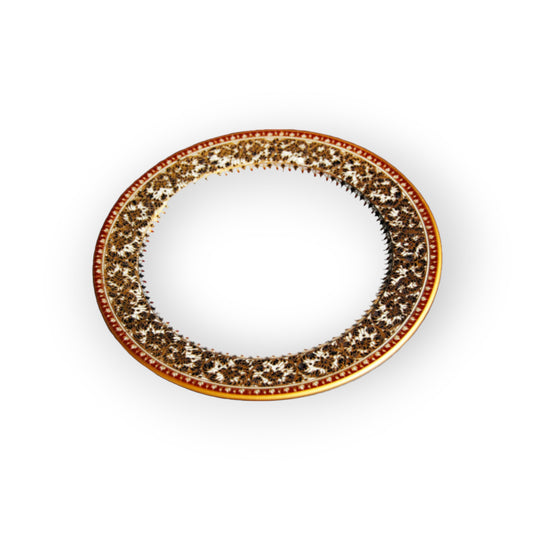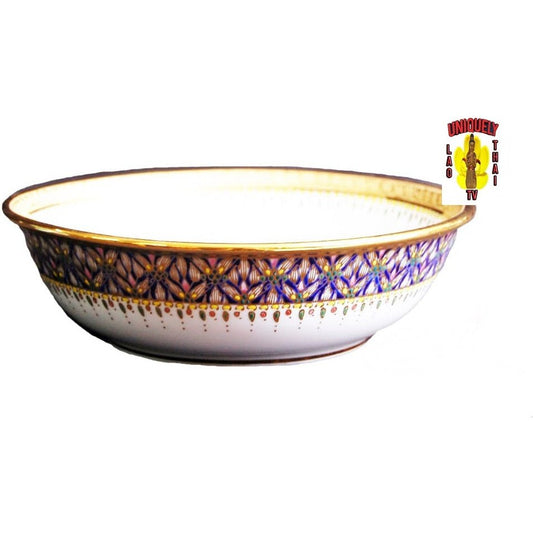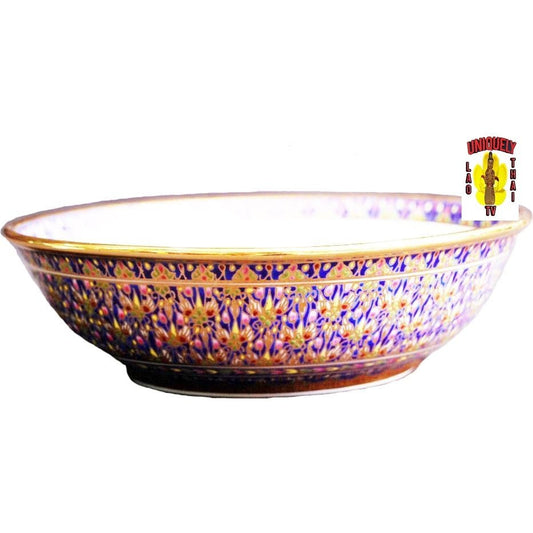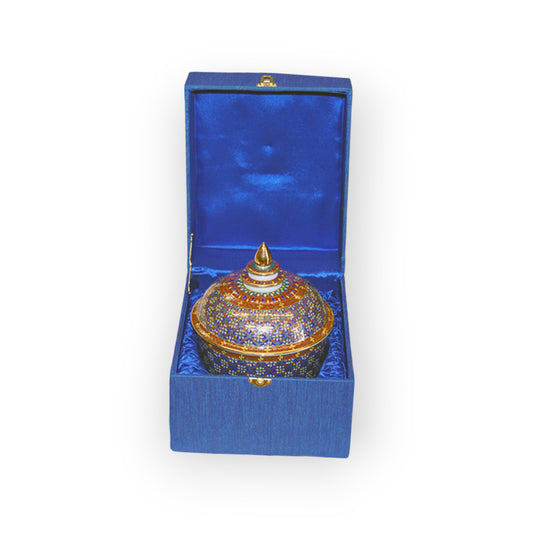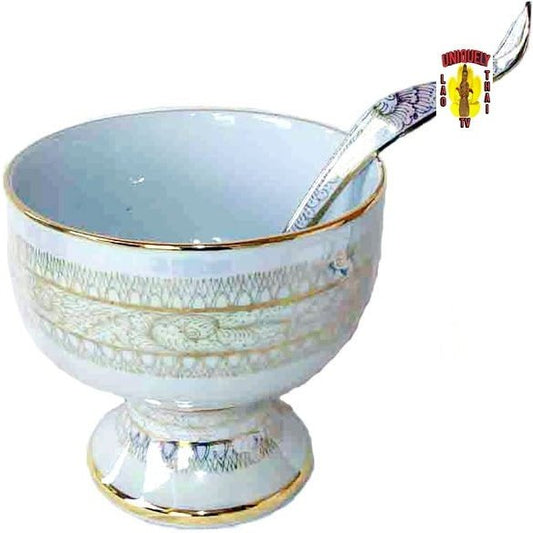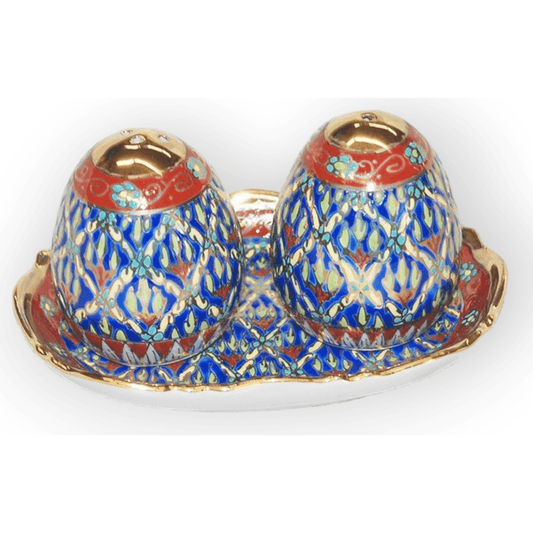Collection: Benjarong Porcelain from Thailand
One of Thailand's remarkable décor items is the Benjarong porcelain collection, which is a traditional form of Thai porcelain. It features multi-colored enamels on a white porcelain base and has its origins in the Ming dynasty in China. The term "Benjarong" is derived from the Balinese and Sanskrit words Benja and Rong, which literally mean "Five Colors." However, it actually represents "many colors" since the hand-painted pieces are usually decorated in three, five, eight, or even more colors. Benjarong porcelain is easily recognizable due to its distinctive design features:
- The decoration is densely painted and intricately detailed, often featuring symmetrical patterns based on geometrical designs.
- Benjarong wares were enameled with relief glaze, emphasizing the background color, while Chinese wares were thinly painted and never emphasized the background color.
- The use of lavish gold lends a dazzling attractiveness to the pieces.
- Patterns include traditional Thai motifs such as flora, plants, and flame designs, as well as cultural symbols like The Garuda (the half-man, half-bird mount of the god Vishnu and a symbol of Thai royalty), and the emblem of the Thai king.
From the 13th to the 18th century, Benjarong porcelain was exclusively made for the royal court. Later, its use extended to aristocrats and wealthy merchants, and today, people of all nationalities use Benjarong for formal occasions. The earliest Benjarong designs used a limited number of colors, primarily for religious subjects, but eventually, a new design style emerged known as "Lai Nam Thong," which prominently featured gold. During the reign of King Rama II (1809-1851), Lai Nam Thong wares with exquisite gold accents became fashionable. Today, the original Benjarong wares are exhibited at the Thai National Museum in Bangkok.
-
Benjarong Soup Tureens ladle 11" Diameter with Ladle
Regular price $235.00 USDRegular price -
Unique Benjarong Tea Set for Four
Regular price $120.00 USDRegular price -
Benjarong Tea Set for Four
Regular price $120.00 USDRegular price -
Benjarong Fruit Bowl
Regular price $358.00 USDRegular price -
Benjarong Dinner Plate 8"
Regular price $39.95 USDRegular price -
Benjarong, Plate 8" Diameter
Regular price $39.95 USDRegular price -
Benjarong, Bowl-1 7" Diameter
Regular price $49.00 USDRegular price -
Benjarong Bowl-2
Regular price $49.00 USDRegular price -
Benjarong Bowl & Lid with Box 6" Diameter
Regular price $240.00 USDRegular price -
Gold Trim Deep Tureen w spoon
Regular price $150.00 USDRegular price -
Benjarong Salt Pepper Set 5" x 3.5"
Regular price $68.00 USDRegular price$75.00 USDSale price $68.00 USDSale -
Benjarong Bowl Pedestal, Lid & Stand
Regular price $220.00 USDRegular price -
Benjarong Bowl and Lid 8" Diameter 12" Tall
Regular price $500.00 USDRegular price$410.00 USDSale price $500.00 USD -
Benjarong Urn & Lid 8" Tall
Regular price $250.00 USDRegular price -
Benjarong Salt & Pepper Set 2-5" x 3.5"
Regular price $63.00 USDRegular price$75.00 USDSale price $63.00 USDSale -
Benjarong Salt & Pepper Set -4-5" x 3.5"
Regular price $74.95 USDRegular price -
Benjarong Bowl, Pedestal and Lid 10" Diameter Mouth
Regular price $220.00 USDRegular price

